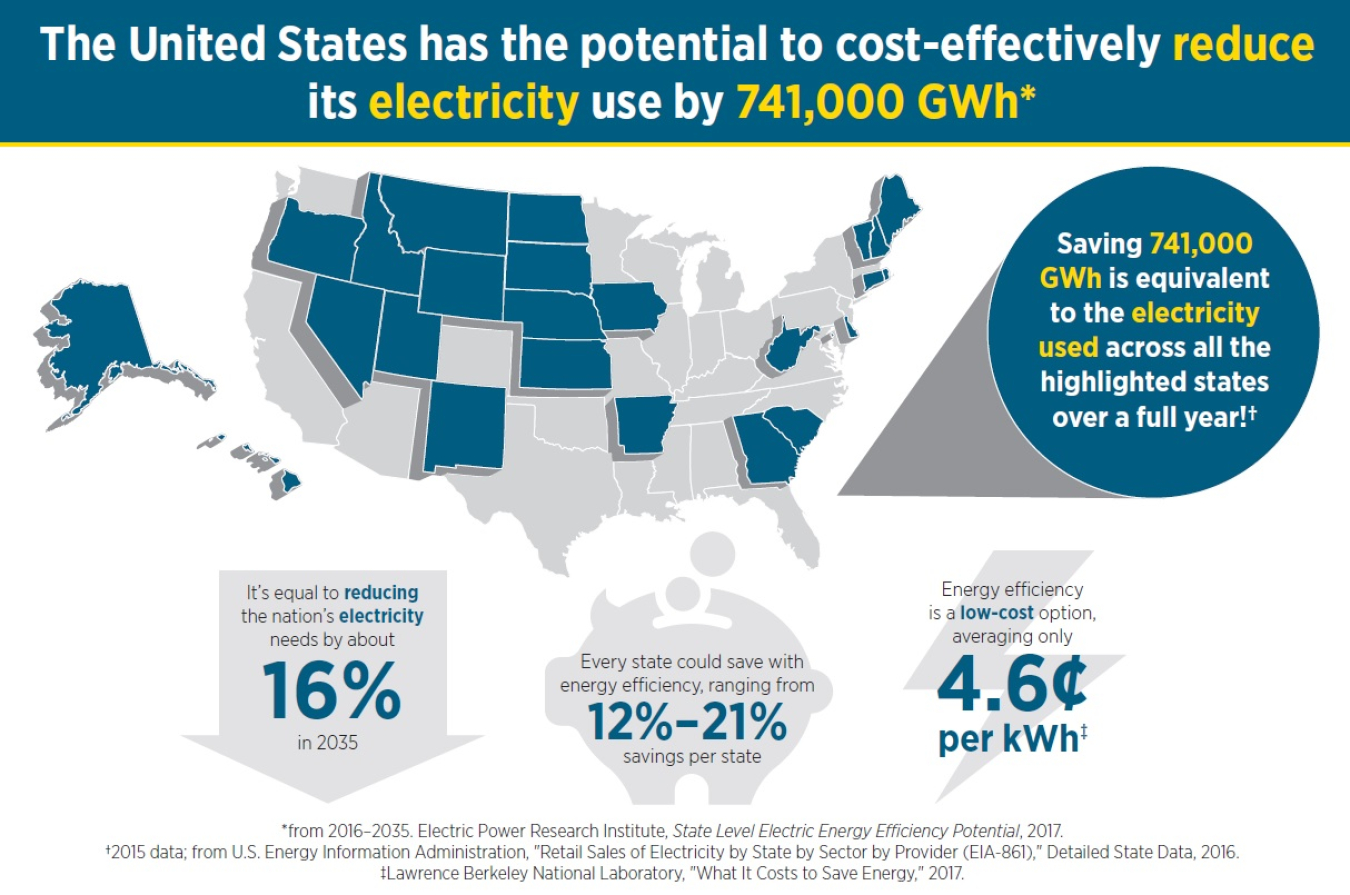740,985 GWh of cost-effective, electric energy efficiency potential is available nationwide from 2016 to 2035, with savings available in every state.
May 15, 2017
See the report and supplementary data below. Find related resources on the State and Local Solution Center's Energy Efficiency: Savings Opportunities and Benefits page, including the full version of this infographic, a fact sheet, and webinar.
Utilities and policy makers increasingly look to energy efficiency as a cost-effective resource to enable reliable and affordable electric service while at the same time reducing carbon emissions. In 2014, the Electric Power Research Institute (EPRI) commissioned a study to assess the potential energy savings achievable through energy efficiency and demand response programs in the United States across the residential, commercial, and industrial sectors. Following the publication of the national study, stakeholders expressed interest in a consistent and comparable state level energy efficiency potential analysis to aid in state-specific energy planning.
The U.S. Department of Energy's Office of Energy Efficiency and Renewable Energy commissioned EPRI to determine the energy efficiency potential on a state level in this report, State Level Electric Energy Efficiency Potential Estimates. The updated analysis shows a total national estimate of 740,985 GWh of cost-effective electric energy efficiency economic potential from 2016 to 2035, which represents 16% of baseline retail sales in 2035, with substantial savings from the residential, commercial, and industrial sectors. The state allocation shows that every state has a large amount of electric energy efficiency potential that can be utilized as a cost-effective energy resource.
The report is available on EPRI's website and below, along with supplementary results data from the incentives analysis.

